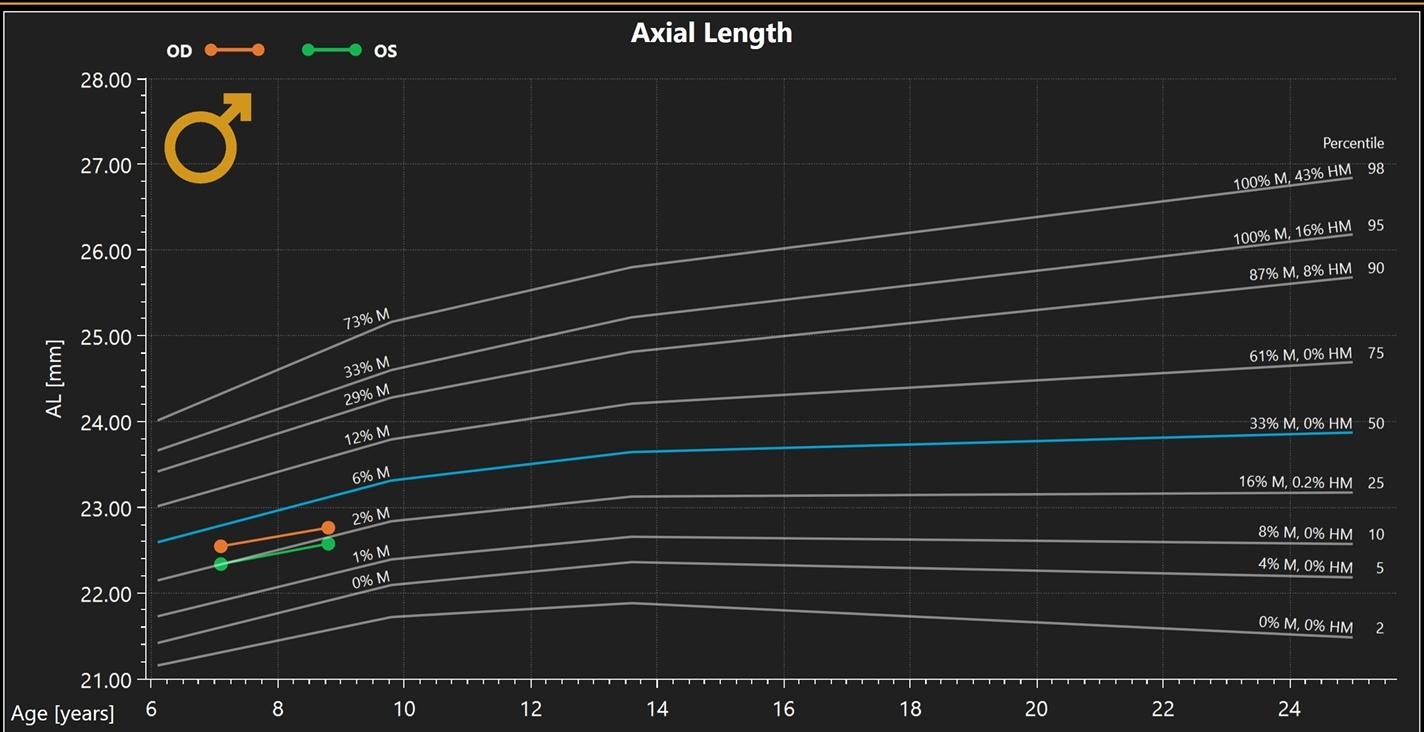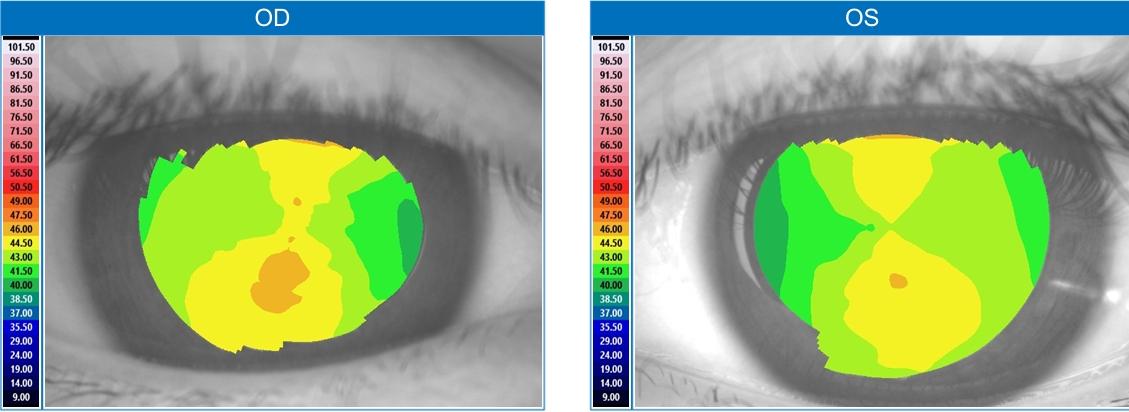Children's Comprehensive Eye Examℹ️
Price
$98
Eligibility
Under 19 with OHIP Eligibility*
Beyond the OHIP covered eye exam, we offer a comprehensive ocular health exam including imaging which assesses risk for myopia and diseases such as keratoconus.

What's Included
- Personalized consultation with an optometrist
- Assessment of visual acuity and eye health
- Axial length measurement
- Prescription updates for glasses and contacts **
- OCT, retinal imaging and visual field screening **
- Referral for medical or surgical care if needed
** Included as clinically indicated.
Related Services
What to Expect
- Note: Spadina Optometry is a training site for student optometrists through the University of Waterloo's Optometry Clerkship. You may be seen by a supervised student during your visit.
Retinal Photos
Optomap retinal imaging allows us to document the retina with a digital photograph showing up to 80% of your child's retina.

Axial Length
Myopia (nearsightedness) occurs when the eye grows longer faster than it should for your age. Measuring the length of eyes (axial length) tells us:
- Risk of myopia onset (if not yet myopic)
- Rate of myopia progression
- Risk of high myopia (greater than -6D)
- How well our myopia control strategy is working (if applicable)

Corneal Mapping
Keratoconus occurs when the cornea (front surface of the eye) develops an irregular, bulging shape, which is worsened by eye rubbing. It can lead to irregular high astigmatism, and irreversible vision loss. Topography maps out the cornea to show us possible weak or bulging areas, as well as eyes that will retain regular astigmatism.

Suggested Ages for Eye Examinations
| Infants and Toddlers (Birth to 24 months) | Infants and toddlers should undergo their first eye examination between the ages of 6 and 9 months |
|---|---|
| Preschool Children (2 to 4 years) | Preschool children should undergo at least one eye examination between the ages of 2 and 4 years |
| School Age Children (5 to 19 years) | School children aged 5 to 19 years should undergo an eye examination annually |
Why Patients Choose Spadina Optometry
From emergency visits to long-term eye health, patients trust us for compassionate care, clear communication, and a team that truly listens. Read what they say about their experience.
Ready When You Are
We know life is busy. That's why we make it easy to get expert care — right here in the heart of downtown Toronto. Flexible appointments. Friendly team. No stress.
Additional Details & Definitions aka the fine print
-
Spadina Optometry is a training site for student optometrists through the University of Waterloo's Optometry Clerkship. You may be seen by a supervised student during your visit.
-
OHIP Eligibility is defined by the Ministry of Health and Long-Term Care. Patients aged 20 to 64 years who have any of the following medical conditions can go to their optometrist or physician and receive an OHIP insured eye examination once every 12 months : diabetes mellitus, glaucoma, cataract, retinal disease, visual field defects, corneal disease, active uveitis or optic pathway disease.
-
Additional follow-up and partial eye exams may be required.
-
As required. There are no additional fees on our Annual Eye Exams for retinal photos or OCT. OHIP does not cover retinal photos or OCT, which we feel is important to thoroughly examine your eyes for retinal diseases and glaucoma. Early diagnosis and intervention is our goal.
-
In Ontario, OHIP will cover the cost of an eye examination once every 12 months for patients up to 19 years of age, and once every 18 months for patients over 65 years of age. Patients aged 65 and over with certain medical conditions such as diabetes or glaucoma may be eligible for an OHIP-covered eye exam every 12 months. Full details about OHIP eyecare coverage including a list of eligible medical conditions are available from the Ministry of Health and Long-Term Care website. Patients aged 20 to 64 years who have any of the following medical conditions can go to their optometrist or physician and receive an OHIP insured eye examination once every 12 months: diabetes mellitus, glaucoma, cataract, retinal disease, visual field defects, corneal disease, active uveitis, or optic pathway disease.
-
Routine eye examinations provided by either an optometrist, ophthalmologist or physician, for patients aged 20 to 64, are not covered by OHIP. These individuals are responsible for payment for these examinations or have the cost covered by private insurance.
-
There may be additional fees not covered by these programs. Because of the individual programs we ask that patients contact us before scheduling an appointment. Different programs have different documentation and different coverages. Please contact us and we can help figure out what is required for your situation.
-
Partial eye examinations follow an initial annual assessment and address an issue that has started during the year or to follow-up on an existing condition. The tests required may very depending on the reason for the visit. The fees for a partial eye examination starts from $95 and may be covered by OHIP in some instances.






